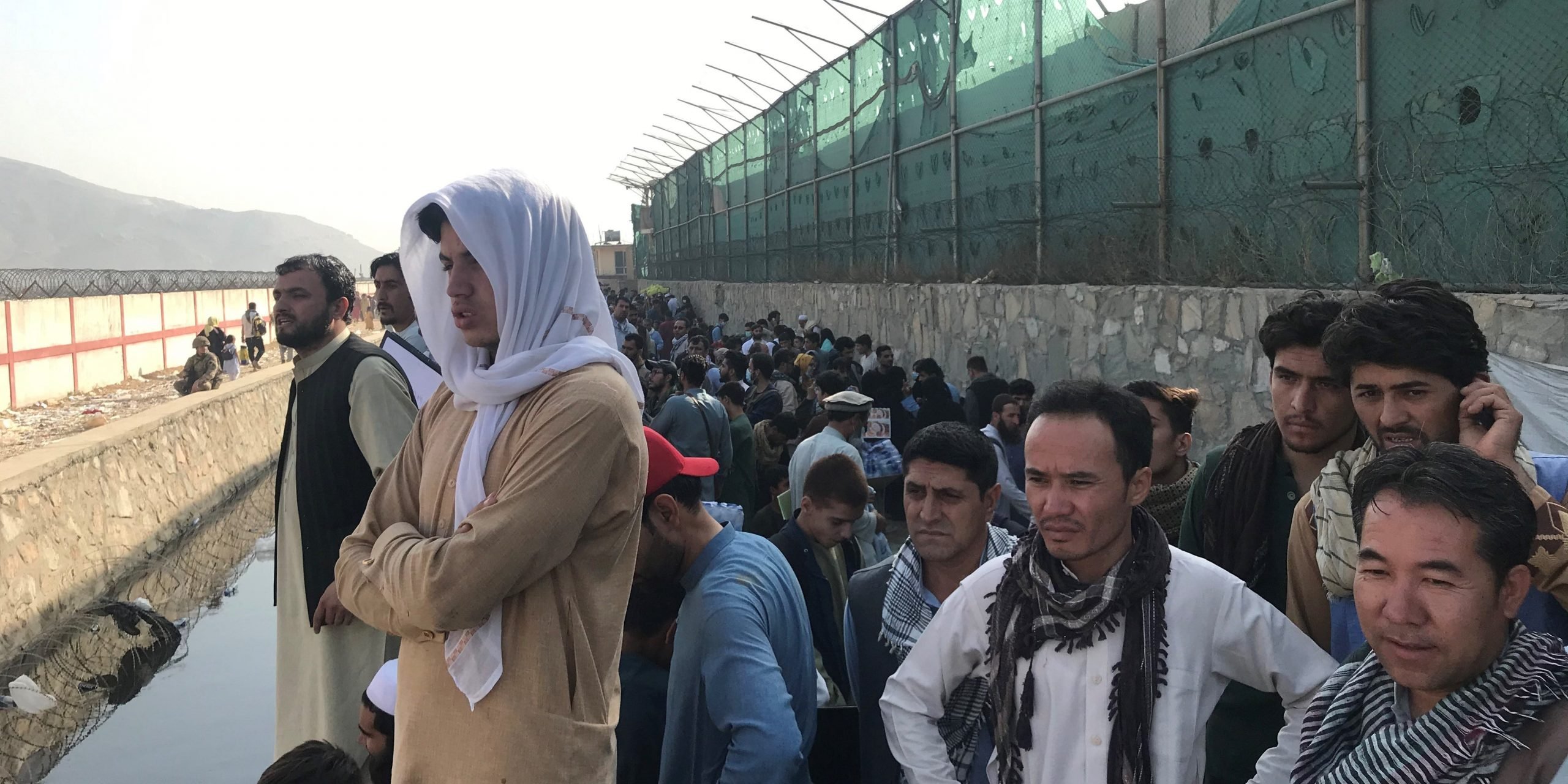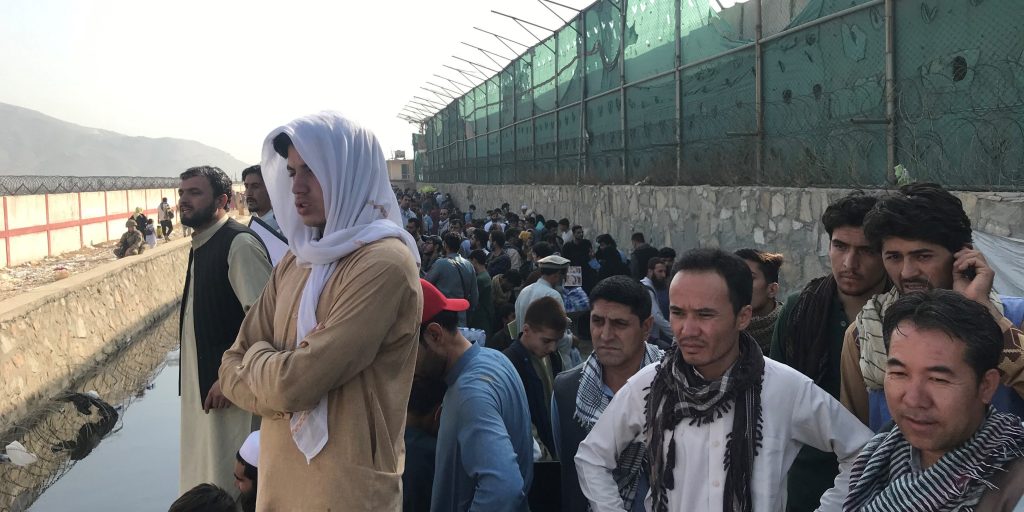
Rahmatullah Alizadah/Xinhua via Getty
- The US left behind "the majority" of SIV applicants in Afghanistan, a State Department official said.
- By Aug. 15, when Kabul fell to the Taliban, over 20,000 SIV applicants remained in Afghanistan.
- The official described the logistical hurdles for evacuations at the Kabul airport.
- See more stories on Insider's business page.
The US left behind "the majority" of special immigrant visa (SIV) applicants in Afghanistan, a State Department official said on Wednesday, despite the concerted effort to evacuate interpreters and other Afghan allies before the Aug. 31 withdrawal deadline.
The official made the disclosure in a private briefing with reporters, according to Politico.
After Kabul fell to the Taliban on Aug. 15 and the US began a large-scale evacuation process, thousands of Afghans went to the Hamid Karzai International Airport in Kabul in an attempt to flee the country.
The US still doesn't have definitive details on the individuals who were evacuated from Afghanistan, the official said, but estimated that most visa applicants were unable to make it out of the country.
"I would say it's the majority of them," the official added during the meeting. "Just based on anecdotal information about the populations we were able to support."
In May, roughly 20,000 Afghan allies were in the pipeline for a special immigrant visa, according to NBC News. When family members are included, the pool of Afghans in the SIV program was at least 70,000, according to refugee advocacy groups.
By Aug. 15, over 20,000 SIV applicants remained in Afghanistan.
The official said that individuals involved in the evacuation effort lamented how they were unable to assist people who sought refuge outside of the country.
"Everybody who lived it is haunted by the choices we had to make and by the people we were not able to help," the official said.
In the final days leading to Aug. 31, the US zeroed in on evacuating Americans citizens and permanent residents.
The official said that the desire to aid the most vulnerable Afghans by providing them safe passage into the Kabul airport and onto planes was blunted by the threat of a terrorist attack, the limited entry points to the airport, and Taliban-controlled approaches to the airport.
Last Thursday, a suicide bombing near the Kabul airport killed at least 169 Afghans and 13 US service members, which marked the deadliest day for US military members in the country since 2011.
The official added that a significant amount of SIV applicants remained in the country because "every credential we tried to provide electronically was immediately disseminated to the widest possible pool."
He added: "It was no longer a viable credential to differentiate among populations, and we simply did not have the people for that time to be able to try to sift through that crowd of people demanding access."
President Joe Biden on Tuesday pledged to help the estimated 100 to 200 Americans who remain in Afghanistan and still hope to leave the country.
